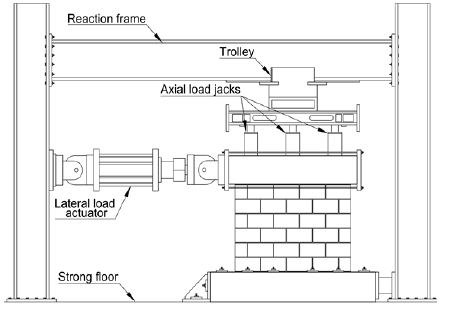1 PhD student, Department of Civil Engineering, University of Texas at Arlington, Arlington, TX 76019, USA, alireza.sayah@mavs.uta.edu
2 Assistant Professor, Department of Civil Engineering, University of Texas at Arlington, Arlington, TX 76019, USA, stavridis@uta.edu
3 Walker Structural Engineering, LLC, Bend, OR 97701, USA, jacob.sherman@email.wsu.edu
4 Professor, Department of Civil and Environmental Engineering, Washington State University, Pullman, WA 99164, USA, mclean@wsu.edu
ABSTRACT
This paper presents a finite element scheme that combines the smeared and discrete crack approaches to simulate the behavior of reinforced masonry shear walls under in-plane lateral loads. The smeared crack elements are used to capture the crushing and diffused cracking of masonry, while the zero-thickness interface elements are employed to allow the development of discrete dominant cracks along the bed and head joints, as well as in the concrete masonry units. The proposed scheme has been evaluated with experimental data obtained from tests of two fully-grouted reinforced masonry shear wall specimens. The material parameters have been calibrated with data from material tests and data available in the literature. The comparison of the numerical results obtained from the finite element analyses and the experimental data indicates that the finite element models can simulate the failure patterns of their experimentally tested counterparts including crushing and the development of shear and flexural cracks. The finite element model can also capture reasonably well the initial stiffness, the peak resistance, and the residual strength of the specimens.
KEYWORDS: reinforced masonry, shear wall, seismic performance, finite element modeling
165.pdf



